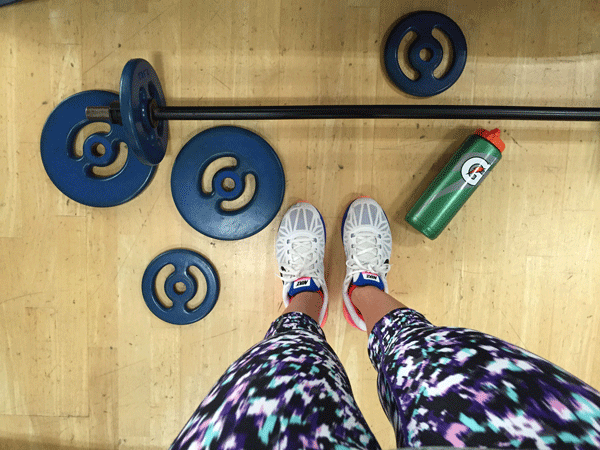After our TRX Seminar last week, Coach Jim Saret came to talk about the benefits of the foam roller, but as the Philippine Olympic Committee’s Sports Training and Fitness Consultant for all national teams and Speed and Conditioning Coach for RP SMART GILAS Basketball Team (plus many more!), he ended up giving us a Running 101 talk that I believe every runner, especially beginners, should hear to prevent injuries and further improve performance.
A few things I learned from Coach Jim that day:
1. The most important leg muscle for a runner is the HAMSTRING, not the quads as commonly mistaken. Hamstrings are used for the lift off of the foot from the ground.
2. It is important for a runner to exercise the foot too since this is what makes contact with the ground. Best equipment for this: ELASTIC BELT.
3. Runners should spend 40% of their training working on their CORE. Core and strength exercises can help make you a faster runner, not just speedwork.
STABILITY TEST:
Coach Jim had us perform a simple test to check which leg was more stable:
1. Lift one foot off the ground. Other leg has knee slightly bent.
2. Do the same with the other leg.
3. Based on that test, which one feels more stable? (Less shaking, more balanced)
4. Now, close your eyes.
5. Repeat no. 1 and 2. (Try not to laugh as I did!)
6. Based on your performance (less falling or swaying), which leg is more stable?
The leg that performed better when your eyes were closed is actually the stronger, more stable leg. Which one is yours?
STABILITY EXERCISE:
1. Lift one foot off the ground. Other leg has knee slightly bent.
2. Point your leg towards 12:00, 6:00, 3:00, 9:00, etc.
3. Do the same with the other leg.

STABILITY BALL EXERCISES:
The stability ball is another useful tool for runners. Here are two important exercises runners should perform:
1. PLANKS for the CORE
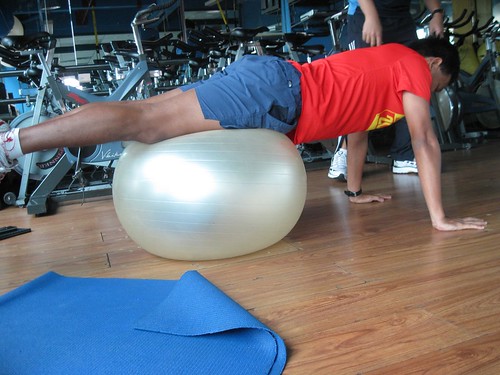
– Crawl forward with the stability ball moving from your thighs down to your feet. –
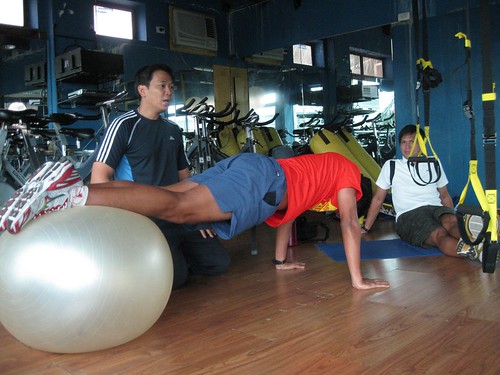
– Hold this position for 30 sec. You can progress to 1 minute or more as you improve. Poor Neville! –
2. HAMSTRING exercise
– For beginners: move the hips up and down in a straight line
– For advanced: keeping the hips up, move the ball back and forth using your feet. To add difficulty, keep one leg up
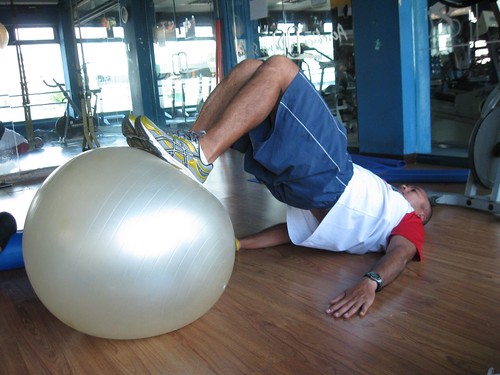
– Beginners –
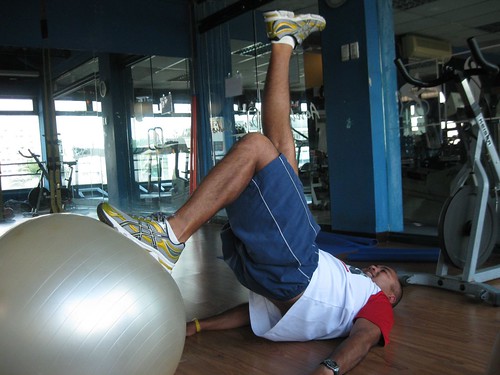
– Advanced –
Previous posts: TRX Suspension Trainer Seminar and How to Use the Foam Roller for Runners

